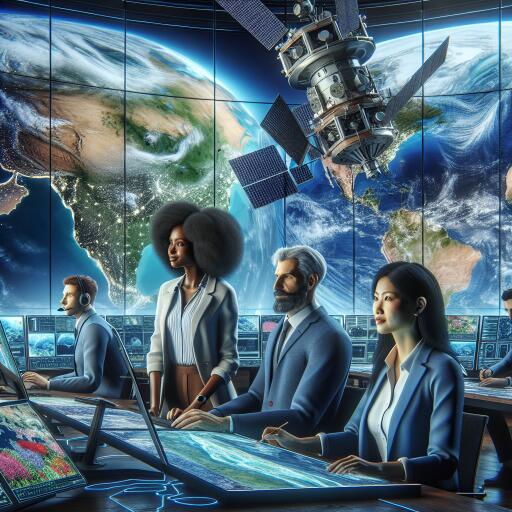
Revolutionizing Coral Reef Conservation Through Satellite Technology
In a groundbreaking approach to marine conservation, a recent study has leveraged the power of satellite imagery to map coral reef biodiversity across the globe. This innovative method marks a significant advancement in our capability to identify and safeguard areas rich in underwater life, emphasizing a strong link between the variety of habitats and the diversity of species residing within them.
The exploration into this method was led by a dedicated team from a notable institution specializing in marine, atmospheric, and Earth sciences. They have successfully demonstrated that the complexity of coral reef habitats, as seen from space, can serve as an effective indicator of the ecosystems’ biodiversity. This finding has the potential to transform conservation strategies by providing a cost-effective, efficient means to pinpoint regions of ecological significance that warrant protection and restoration efforts.
Using sophisticated remote sensing technology, the research dives into a more sustainable, expansive way to gauge the health and biodiversity of coral reefs. Traditionally, such assessments required exhaustive underwater surveys by divers—a process that was not only labor-intensive but also limited in scope due to logistical challenges and financial constraints.
The study set itself apart by comparing satellite-derived habitat complexity with existing data on coral and reef fish diversity, gathered from an extensive database of SCUBA diver surveys spanning the Atlantic, Pacific, and Indian Oceans. This comprehensive analysis revealed a consistent relationship between the seabed’s physical complexity and the variety of species it supports.
“By identifying how satellite imagery can mirror the biodiversity of these vital ecosystems, we unlock a new realm of possibilities for marine conservation,” shared one of the lead researchers. “This approach enables us to conduct a global assessment of reef biodiversity from space, offering a unique vantage point that was previously unavailable.”
This research does not just open new doors for scientific exploration; it provides a practical tool for policymakers and conservationists. By pinpointing areas of high biodiversity, efforts can be more strategically directed towards protecting these ecological hotspots. Such advancements are crucial for marine spatial planning and the effective designation of marine protected areas.
The implications of this study are far-reaching, offering a beacon of hope for coral reefs worldwide. As these ecosystems face increasing threats from climate change, pollution, and human activity, innovative solutions like satellite mapping become indispensable in our quest to preserve the planet’s biodiversity.
Published in a renowned environmental science journal, this study stands as a testament to the role of technology in advancing ecological conservation. It’s a collaborative effort that brings together experts in marine geosciences, physics, and environmental conservation, underscoring the interdisciplinary nature of tackling global environmental challenges.
As we look towards the future, it’s clear that satellite technology will play a pivotal role in understanding and protecting our world’s coral reefs. This research not only highlights the potential of remote sensing in biodiversity assessment but also reinforces the importance of innovative approaches in the ongoing battle to preserve Earth’s natural treasures.





Leave a Reply